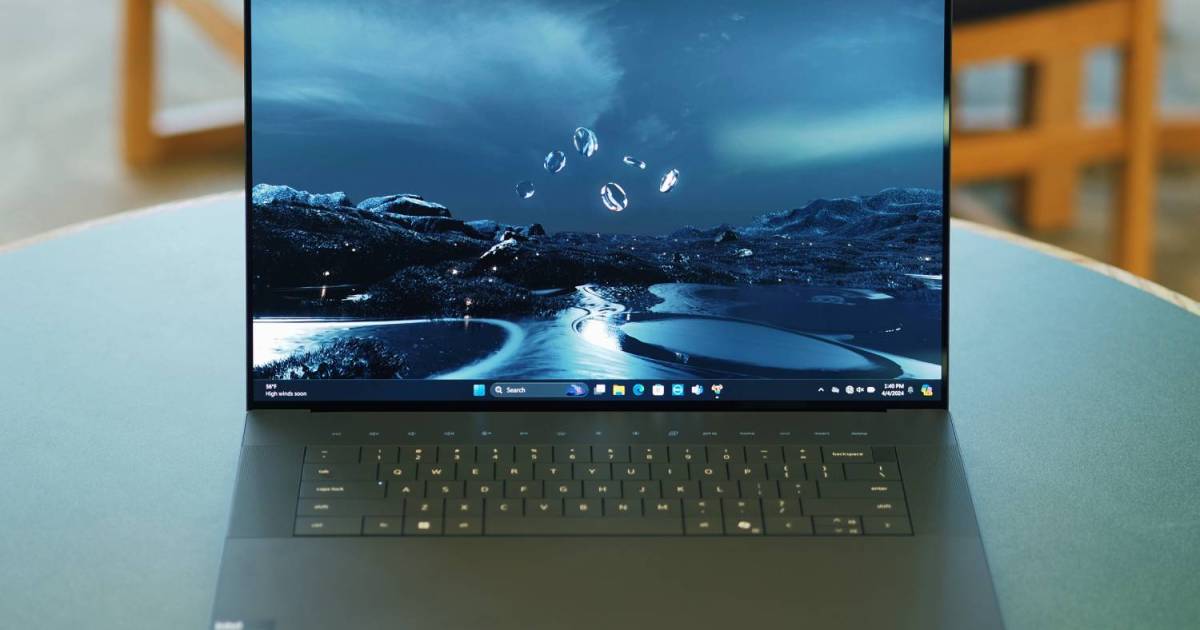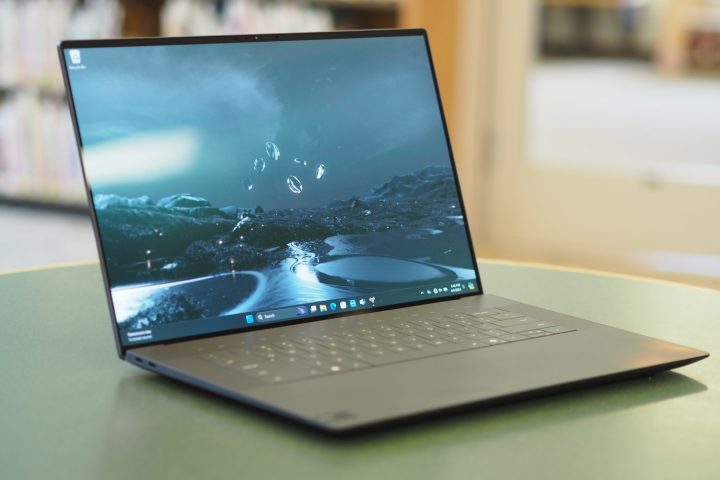
Dell’s XPS 15 had long been on our list of the best 15-inch laptops, and for good reason. It was fast, thin and light, and extremely well built. Dell changed things up with its successor, the XPS 16, which incorporated a larger display and several ultramodern features. But when compared to a new crop of 16-inch laptops, it hasn’t been quite as much of a standout.
One recently updated competitor is the Lenovo Yoga Pro 9i 16, which also offers a solid build, fast components, and an excellent display. It’s not as slickly designed, though. Can it dethrone the Dell’s large-screen XPS?
Specs and configurations
| Dell XPS 16 | Lenovo Yoga Pro 9i 16 | |
| Dimensions | 14.1 inches x 9.4 inches x 0.74 inches | 14.28 inches x 9.99 inches x 0.72 inches |
| Weight | 4.7 pounds | 4.52 pounds |
| Processor | Intel Core Ultra 7 155H Intel Core Ultra 7 165H Intel Core Ultra 9 185H |
Intel Core Ultra 7 155H Intel Core Ultra 9 185H |
| Graphics | Intel Arc graphics Nvidia GeForce RTX 4050 (50W) Nvidia GeForce RTX 4060 (50W) Nvidia GeForce RTX 4070 (60W) |
Nvidia GeForce RTX 4050 Nvidia GeForce RTX 4060 |
| RAM | 16GB LPDDR5x (6400 MT/s) 32GB LPDDR5x (6400 MT/s, 7467 MT/s RTX 4070) 64GB LPDDR5x (6400 MT/s, 7467 MT/s RTX 4070) |
16GB LPDDR5x (7467 MT/s) 32GB LPDDR5x (7467 MT/s) |
| Display | 16.3-inch 16:10 FHD+ (1920 x 1200) IPS non-touch, 60Hz 16.3-inch 16:10 4K+ (3840 x 2400) OLED touch, 90Hz |
16-inch 16:10 3.2K (3200 x 2000) IPS touch/non-touch 165Hz 16-inch 16:10 3.2K (3200 x 2000) mini-LED touch, 165Hz |
| Storage | 512GB SSD 1TB SSD 2TB SSD 4TB SSD |
512GB SSD 1TB SSD |
| Touch | Optional | Optional |
| Ports | 3 x USB-C with Thunderbolt 4 1 x 3.5mm audio jack 1 x microSD card reader |
1 x USB-C with Thunderbolt 4 1 x USB-C 3.2 Gen 2 2 x USB-A 3.2 Gen 1 1 x HDMI 1 x 3.5mm audio jack 1 x SD card reader |
| Wireless | Wi-Fi 7 and Bluetooth 5.4 | Wi-Fi 6E and Bluetooth 5.3 |
| Webcam | 1080p with infrared camera for Windows 11 Hello | 5MP with infrared camera for Windows 11 Hello |
| Operating system | Windows 11 | Windows 11 |
| Battery | 99.5 watt-hours | 84 watt-hours |
| Price | $2,199+ | $1,971+ |
| Rating | 3.5 out of 5 stars | 4,5 out of 5 stars |
The XPS 16 has several configurable options, starting with a $1,599 basic model with an Intel Core Ultra 7 155H chipset, 16GB of RAM, a 512GB SSD, Intel Arc integrated graphics, and a 16.3-inch FHD+ IPS display. Upgrading from there can be expensive. Moving to a Core Ultra 9 185H adds $750 and adding the fastest GPU costs $800. Those changes also bring other upgrades, though, as adding the Nvidia GeForce RTX 4070 also increases RAM to 32GB. I reviewed the XPS with the Core Ultra 7 155H, 32GB of RAM, a 1TB SSD, the RTX 4070, and the 4K+ OLED display. It costs $2,799. The most expensive configuration is $3,949, with a Core Ultra 9 185H, 64GB of RAM, a 4TB SSD, the RTX 4070, and the 4K+ OLED display.
The Yoga Pro 9i 16 is less expensive, but also can’t be configured as powerfully as the XPS 16, at least on paper. The base model with a Core Ultra 7 155H, 16GB of RAM, a 512GB SSD, an RTX 4050, and a 3.2K IPS display costs $1,482. I reviewed it with the Core Ultra 9 185H, 32GB of RAM, a 1TB SSD, an RTX 4060, and a 3.2K mini-LED display, the price of which is $2,043.
When configured identically with the Lenovo’s high-end model, the XPS 16 costs around $700 more. As we’ll see, the Yoga Pro 9i 16 provides better performance for considerably less money.
Design
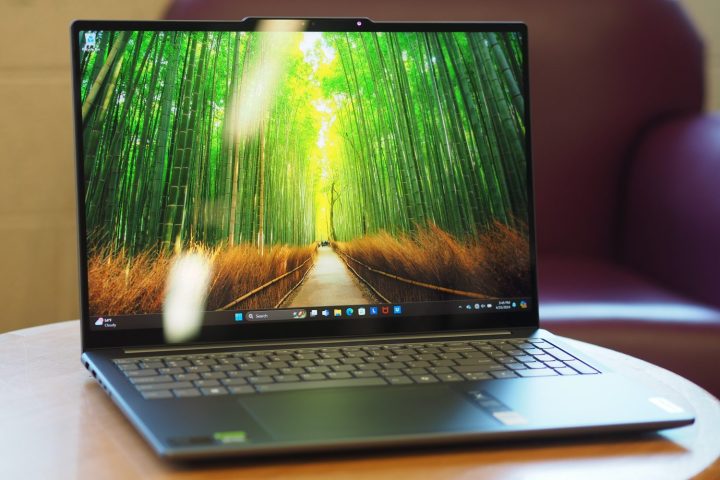
The XPS 16 incorporated various design features from the much smaller XPS 13 Plus that are also shared with the XPS 14. Those include a zero-lattice keyboard, a hidden haptic touchpad, and a row of LED touch function keys that replace their physical counterparts. These features have been controversial, particularly the function keys, and they’re of questionable value on such a large laptop with plenty of space. They do give the XPS 16 a unique and ultramodern appearance on the inside, while the outside looks similar to XPS laptops of the past.
The Yoga Pro 9i 16 is a more traditionally designed machine. It has the usual island keyboard and touchpad and an overall design that isn’t meant to stand out. In some ways, that makes it a more comfortable laptop for many users. To begin with, the keyboard has a typical layout with plenty of key spacing even with the numeric keypad (an anachronism), which offsets the mechanical touchpad a bit.
The keyboard’s switches are as light and snappy as the XPS 16’s, with a bit more depth. The Yoga’s large mechanical touchpad is good enough, but not as precise as the XPS 16’s excellent haptic touchpad — once you get used to its hidden nature. And the Yoga’s physical function keys are a better solution than the XPS 16’s non-haptic LED touch function keys that serve no real purpose.
Both laptops are built extremely well, with all-aluminum chassis and lids. The Yoga Pro 9i 16 is slightly larger even with a smaller display due to the XPS 16’s much thinner display bezels that also contribute to the more modern appearance. The two laptops are close enough in thickness and weight.
Connectivity and webcams
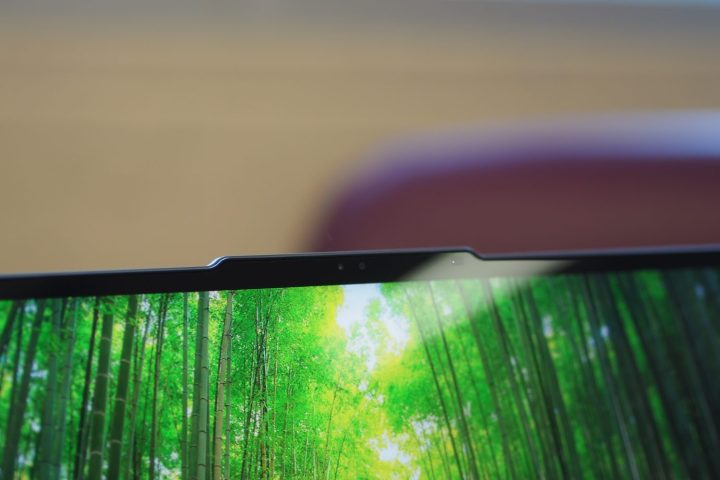
The Yoga Pro 9i 16 has a much more diverse set of ports, including both Thunderbolt 4 and legacy connections. It also enjoys a full-size SD card reader compared to the XPS 16’s microSD version. That makes it a lot more useful for creators. The XPS 16 has more up-to-date wireless connectivity.
The Yoga also has a higher-resolution webcam, and both have neural processing units (NPUs) in their Meteor Lake chipsets that support Microsoft’s Studio Effects software and not a lot else. Both have infrared cameras for Windows 11 Hello facial recognition, and the XPS 16 also has a fingerprint reader embedded in the power button. Note that the Yoga Pro 9i 16 uses a reverse notch to hold its webcam and other electronics, which gives you something to grab on to when opening the lid.
Performance

I reviewed the XPS 16 with the 28-watt Core Ultra 7 155H chipset that has 16 cores (six Performance, eight Efficient, two Low Power Efficient) and 22 threads, and I reviewed the Yoga Pro 9i 16 with the 45-watt Core Ultra 9 185H with the same number of cores and threads and a higher power rating. The XPS 16 was equipped with the faster (on paper) RTX 4070 compared to the Yoga Pro 9i 16’s RTX 4060.
However, Dell limits the XPS 16’s total power to 80 watts, which must be split between the CPU and the GPU. The Yoga Pro 9i 16 gets 130 watts total, which gives its CPU and GPU a lot more power. That showed up in our benchmarks, where the Yoga was significantly faster. Most important, the Yoga was faster in the PugetBench Premiere Pro benchmark that runs in a live version of Adobe’s Premiere Pro. It was also faster in games, often by a considerable margin.
This is one case where higher specs don’t translate to higher performance. Even when configured with the faster CPU, the XPS 16 isn’t likely to be faster because it can’t provide enough power to make a difference. The Yoga Pro 9i 16 makes much better use of its components and is faster for productivity users, creators, and gamers.
| Geekbench 6 (single/multi) |
Handbrake (seconds) |
Cinebench R24 (single/multi/GPU) |
Pugetbench Premiere Pro |
|
| Dell XPS 16 (Core Ultra 7 155H / RTX 4070) |
Bal: 2,196 / 12,973 Perf: 2,238 / 12,836 |
Bal: 72 Perf: 73 |
Bal: 100 / 838 / 9,721 Perf: 102 / 895 / 10,477 |
Bal: 5,401 Perf: 5,433 |
| Lenovo Yoga Pro 9i 16 (Core Ultra 9 185H / RTX 4060) |
Bal: 2,396 / 11,696 Perf: 2,426 / 13,593 |
Bal: 59 Perf: 54 |
Bal: 110 / 1,058 / 9,869 Perf: 112 / 1,115 / 10,415 |
Bal: 5,774 Perf: 6,112 |
Display and audio
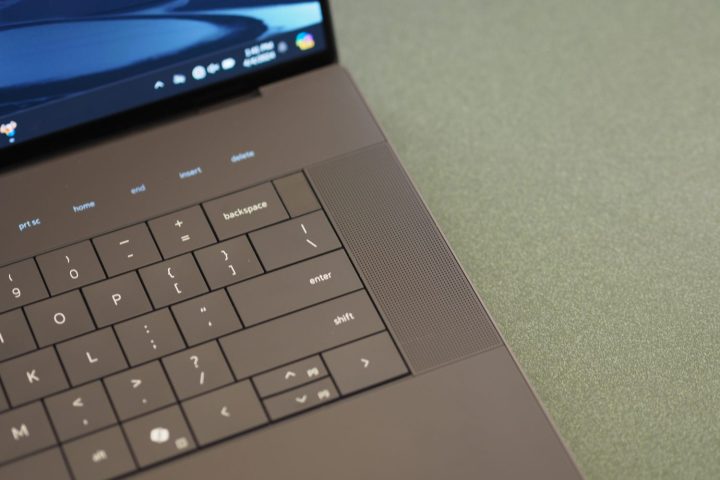
The XPS 16 is available with two display options, FHD+ (1920 x 1200) IPS running at 60Hz and a 4K+ (3840 x 2400) OLED running at 90Hz. The Yoga Pro 9i 16 also has two display options, 3.2K (3200 x 2000) IPS and 3.2K mini-LED, both running at 165Hz.
I tested each laptop with its high-end display. Both are excellent, and offer different benefits depending on your needs. Both have similar colors, but the Yoga Pro 9i 16’s mini-LED display is a lot brighter and has a higher refresh rate, while the XPS 16’s OLED panel has much deeper contrast.
Both displays will work well for productivity users, creators, and gamers. Each laptop can be configured with a lower-power IPS panel for better battery life.
| Dell XPS 16 (OLED) |
Lenovo Yoga Pro 9i 16 (mini-LED) |
|
| Brightness (nits) |
432 | 652 |
| AdobeRGB gamut | 90% | 88% |
| sRGB gamut | 100% | 100% |
| DCI-P3 gamut | 100% | 98% |
| Accuracy (DeltaE, lower is better) |
0.59 | 0.66 |
| Contrast ratio | 27,790:1 | 2,360:1 |
The Yoga Pro 9i 16 has six speakers, two upward-firing tweeters, and four side-firing woofers. The XPS 16 has four speakers, with just two side-firing woofers. In my testing, the Yoga’s audio was louder, clearer, and had more bass, giving it the win.
Battery life
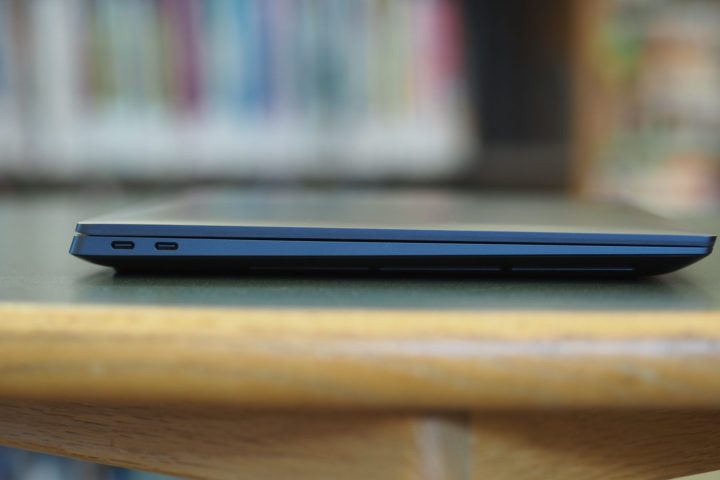
Both laptops are large and relatively heavy, meaning you’ll feel both in a backpack. Neither is more portable than the other.
The XPS 16 has a larger battery than the Yoga Pro 9i 16 and a theoretically higher-power display in my testing. Neither laptop had impressive battery life, with the XPS 16 managing 5.5 hours in both our web-browsing test and video-looping test compared to the Yoga Pro 9i 16’s six hours and 9.5 hours, respectively.
Both laptops will last just a couple of hours doing any kind of demanding work.
The Lenovo Yoga Pro 9i 16 is a less expensive and faster option
The XPS 16 broke some new ground in terms of its design, but not all of those modern features contribute to a more useful laptop. It’s reasonably fast and extremely well built, and its OLED display is excellent. But it’s also quite expensive.
The Yoga Pro 9i 16 costs a lot less while being meaningfully faster, and it also has an excellent build quality and very good display. It’s a safer choice that offers fewer compromises in a more compelling overall package.
Editors’ Recommendations

